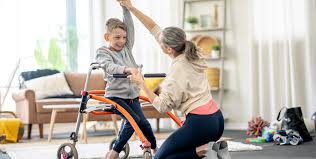Introduction
Pilates is a powerful form of exercise designed to improve strength, flexibility, and overall body awareness. Originating in the early 20th century, Pilates has become a popular fitness choice for people of all ages. With its focus on controlled movements and mindful breathing, Pilates offers numerous health benefits, including improved posture and core strength. This article explores the essence of Pilates, its benefits, and how it can transform your fitness journey.
What is Pilates?
Pilates is a low-impact exercise method that targets the body’s core muscles. Developed by Joseph Pilates, it emphasizes precise movements, controlled breathing, and a strong connection between mind and body. Pilates exercises can be performed on a mat or specialized equipment like the Reformer, which uses resistance to enhance muscle engagement. With its versatility, Pilates can benefit both beginners and advanced practitioners, making it accessible to a wide range of fitness levels.
Benefits of Practicing Pilates
Pilates offers numerous benefits, promoting physical strength, flexibility, and mental well-being. Let’s explore some of its key advantages.
- Improved Core Strength
Pilates targets the deep muscles of the abdomen, back, and pelvis, collectively known as the core. A strong core is essential for stability, balance, and reduced risk of injuries. Many Pilates exercises focus on engaging these core muscles, enhancing overall body control and stability.
- Enhanced Flexibility
Pilates encourages stretching and lengthening of muscles, promoting improved flexibility over time. Regular practice helps increase range of motion in the joints, making everyday movements smoother and more comfortable. Additionally, enhanced flexibility can reduce the risk of strains and injuries.
- Better Posture
Pilates emphasizes alignment, which helps improve posture and body awareness. Through mindful movement and controlled breathing, Pilates teaches practitioners to stand taller and move with greater ease. Improved posture can also relieve tension in the neck, shoulders, and lower back.
- Reduced Stress Levels
Pilates incorporates mindful breathing, helping to reduce stress and improve mental clarity. This focus on breathing allows practitioners to calm their minds, lower stress, and boost overall mental well-being. Many people find that Pilates provides a sense of relaxation and calm.
- Increased Muscle Tone
Pilates uses resistance exercises to build lean muscle tone, especially in the core, arms, and legs. Unlike high-impact exercises, Pilates focuses on controlled, precise movements, allowing for gradual and sustainable muscle development. This approach creates a strong, toned body without adding bulk.
Types of Pilates: Mat vs. Reformer
Pilates can be practiced on a mat or specialized equipment, such as the Reformer, which offers different experiences and benefits.
- Mat Pilates
Mat involves performing exercises on a mat using body weight for resistance. Mat it is accessible, requiring minimal equipment, and is suitable for practicing at home or in studios. Many mat exercises target core strength, balance, and flexibility, focusing on full-body conditioning.
- Reformer Pilates
Reformer it uses a machine called the Reformer, which consists of a sliding carriage, springs, and pulleys. This equipment adds resistance and variety to exercises, allowing for deeper engagement of muscles. Reformer Pilates can intensify workouts, targeting specific muscle groups with more precision.
Both types of have unique benefits, and many practitioners enjoy incorporating both into their routines. Mat it is ideal for those seeking simplicity and convenience, while Reformer Pilates provides an added challenge and variety.
How to Start Practicing Pilates
Starting it can be simple with the right approach. Follow these steps to incorporate Pilates into your fitness routine.
- Find a Reputable Studio or Instructor
To begin, consider finding a certified instructor who can guide you through the basics. A knowledgeable instructor ensures proper form and alignment, which is essential for achieving results and preventing injuries. Many studios offer introductory classes, making it easy to get started.
- Choose Between Group Classes or Private Sessions
It can be practiced in group classes or private sessions, depending on your preferences. Group classes offer a social atmosphere and are typically more affordable, while private sessions provide personalized instruction. For beginners, private sessions can be beneficial in learning the foundational movements safely.
- Start with Basic Exercises
Starting with beginner exercises is essential for building a solid foundation in this. Focus on mastering fundamental movements and breathing techniques before advancing. Common beginner exercises include the Hundred, Single-Leg Stretch, and Roll-Up, each targeting core strength and flexibility.
- Practice Consistently
Consistency is key into experience its benefits fully. Aim to practice Pilates two to three times per week to improve strength, flexibility, and posture. Regular practice enables your body to adapt and progress, leading to noticeable improvements over time.
Pilates for Different Fitness Goals
It is highly adaptable and can be tailored to meet various fitness goals, making it suitable for diverse needs.
- For Rehabilitation and Recovery
It is often recommended for rehabilitation, especially for back and joint injuries. Its low-impact, controlled movements allow individuals to strengthen muscles without aggravating injuries. Pilates can aid in recovery by enhancing flexibility, reducing pain, and improving movement patterns.
- For Athletes and Active Individuals
Many athletes incorporate Pilates to enhance core stability, balance, and injury prevention. Pilates complements other sports and fitness activities, promoting flexibility and control. Additionally, it can help improve athletic performance by building a strong, balanced body.
- For Stress Relief and Mental Well-being
It provides a calming and mindful workout, ideal for individuals seeking stress relief. By focusing on controlled breathing and mindful movement, It helps reduce stress and improve mental clarity. Many people find that Pilates offers a balanced approach to fitness and relaxation.
FAQs about Pilates
1. Is Pilates suitable for all fitness levels?
Yes, It is highly adaptable and can be tailored for beginners and advanced practitioners alike.
2. How often should I practice Pilates for noticeable results?
Practicing two to three times per week can lead to improved strength, flexibility, and posture over time.
3. Do I need special equipment to start Pilates?
Mat it requires minimal equipment, such as a mat, while Reformer Pilates requires access to specialized machines.
4. Can Pilates help with weight loss?
It can support weight loss by toning muscles and increasing body awareness, but it’s most effective when combined with cardio.
5. How does Pilates differ from yoga?
It focuses on core strength and controlled movement, while yoga emphasizes flexibility, balance, and mind-body connection.
Conclusion
It is a transformative practice that offers numerous physical and mental benefits. From enhancing core strength to reducing stress, Pilates can improve various aspects of your health and well-being. Whether practiced on a mat or a Reformer, It provides a mindful, effective approach to fitness that suits people of all fitness levels. Embracing it can be a valuable step in building a stronger, healthier body while promoting a balanced, peaceful mind. Start your journey today and experience the incredible difference it can make in your life.











